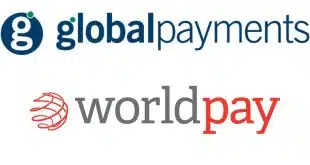Mocapay Inc., one of the earliest startups in the mobile-payments space, finally is poised to go national with new partners, a different pricing model, and a broadened set of technological options that its president says makes payments by smart phone easier for merchants and consumers.
Mocapay launched in 2006 and by 2008 had booked about 200 merchants in Boulder, Colo. At the time, Mocapay said it was poised for a national expansion, but progress turned out to be slow for the Denver-based company that relied only on its internal sales staff. Late last year, with a new emphasis on marketing in combination with payments, it recruited two value-added resellers and two advertising agencies to offer its service to merchants, according to Doug Dwyre, a former executive at First Data Corp. who joined Mocapay in 2011.
Although all four are small companies, the new strategy already is showing results. Dwyre won’t give a number, but says the difference in the number of merchants at the start of 2011 “versus what we have for accounts now is 10-fold.” Mocapay merchants can be found in Colorado and Wyoming and include the Yumilicious yogurt chain in Texas and a restaurant in Chicago. Next month, Mocapay expects to announce that a major national retailer, whom Dwyre would not identify, will become an acceptor. And Mocapay also is recruiting larger independent sales organizations and payment processors to sell its services.
Mocapay also has revamped its pricing. A few years ago, merchants paid a flat 19 cents per transaction, plus a fee of $10 per month per terminal. Now they simply pay a monthly subscription fee, which Dwyre wouldn’t disclose publicly. Merchants that exceed a certain threshold also pay what he calls “a low” transaction fee. “Merchants don’t like to be nickeled and dimed,” he says.
On the technology side, Mocapay under its old model performed authentication using short-message-service (SMS) transmissions to users’ mobile phones. Funding came through automated clearing house transfers from the consumer’s registered demand-deposit account.
Today, Mocapay retains the text-message service but also uses barcodes, and the system will work with near-field communication (NFC) technology, according to Dwyre. Funding options for Mocapay’s wallet now include major-brand payment cards as well as gift and loyalty cards. The consumer creates an account by downloading the Mocapay app to an iPhone or an Android smart phone and then entering her mobile-phone number, after which she receives a text-message confirmation.
To make a purchase, an iPhone or Android user selects a funding option from her Mocapay wallet and then hits the “Get Payment Code” button on the phone’s screen. Mocapay then sends a one-time code, or token that is a proxy for the consumer’s credentials, to the phone that is rendered as a barcode that the clerk scans. Depending on merchant preference, the display can be a 1-D Universal Product Code (UPC) or two-dimensional (2-D) barcode. “We can render any one the merchant wants,” says Dwyre, adding that merchants can integrate Mocapay into their own apps. Settlement works similarly with a credit or debit card sale. “For the merchant, it looks just like another transaction,” he says.
Users of other phones can access Mocapay through the mobile Web and pay at the point of sale by giving the clerk the six-digit code. “The m.o. [modus operandi] for Mocapay is we don’t want to disintermediate any consumers,” says Dwyre.
Mocapay in 2010 received a patent that it applied for in 2006 for its technology that stores consumer credentials in the cloud, not on the phone where it would be vulnerable to theft. The system has a number of checks, including validation of a user’s phone number and device identification number. The tokens are good for only a short period: the default time is 30 minutes, but merchants can set their own times.
Both Visa Inc. and MasterCard Inc. are laying the groundwork for NFC-based mobile payments in their initiatives to replace magnetic-stripe cards with so-called EMV chips in payment cards and smart phones. “I’m a big believer in NFC, Mocapay works on NFC,” Dwyre says. But he adds that consumers today are comfortable with barcodes. “It [NFC] is going to take consumer training. Consumers see a bar code, they know what to do.”
Mocapay has received an undisclosed amount of venture funding from Lacuna Gap Capital in Boulder and Spartan Mobile, Dallas. “We were early, very early, into mobile payments, which was good and bad,” says Dwyre. “Luckily for us, our investors are patient folks.”





